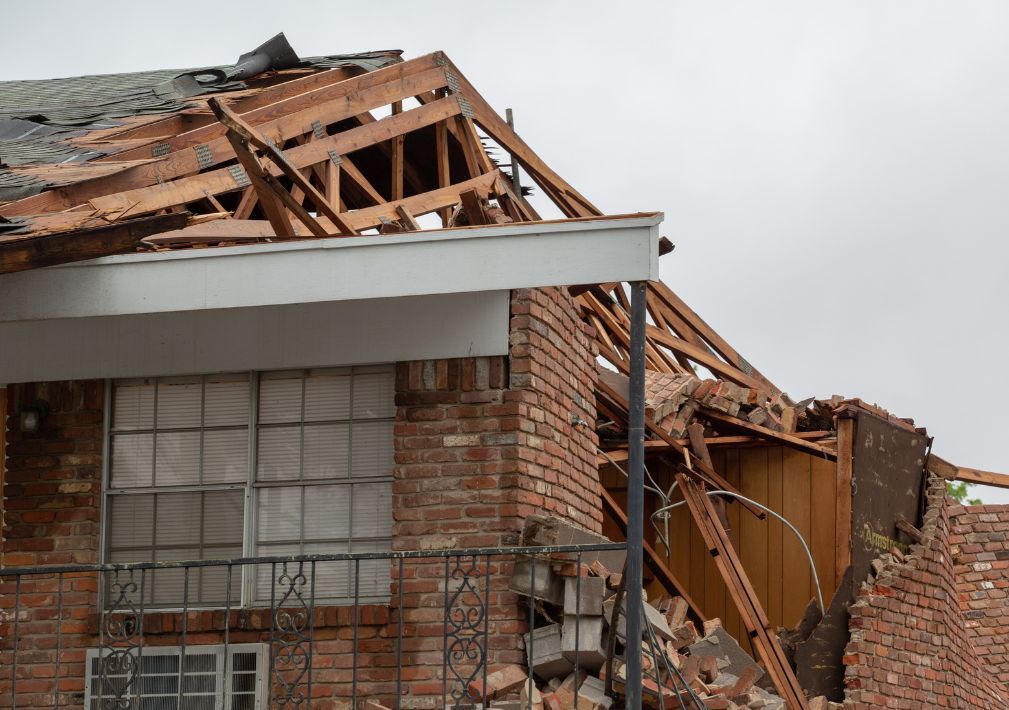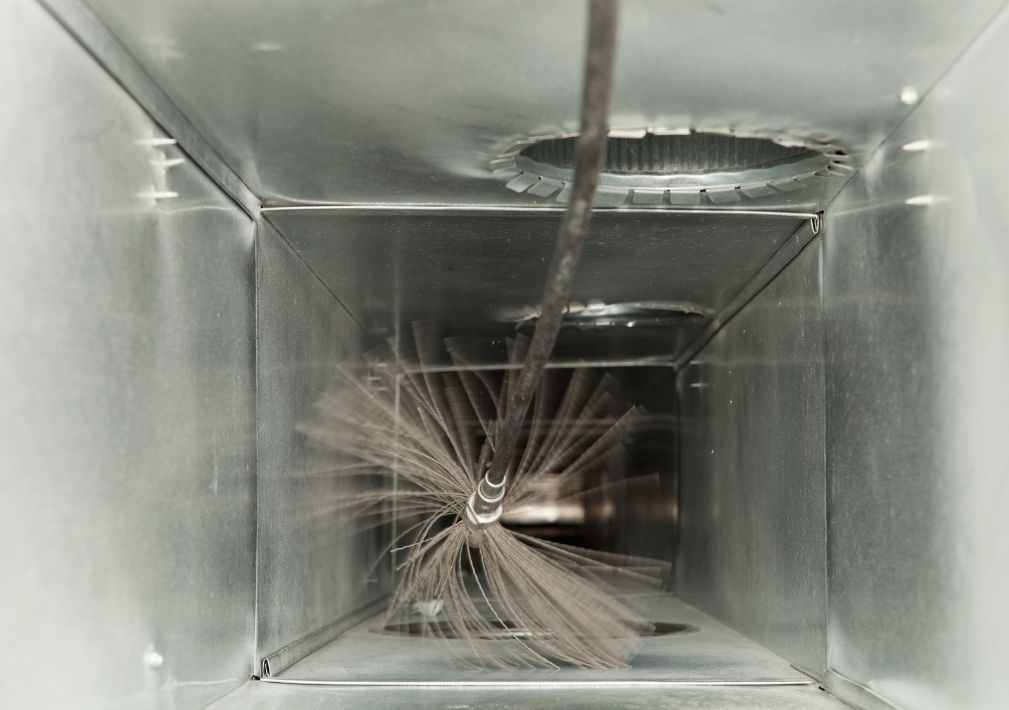What Are The Signs of Water Damage in Parsippany?

One of the most noticeable signs of water damage is discoloration on your walls or ceilings. This can appear as yellow, brown, or even dark spots. Water damage can sneak up on homeowners, often going unnoticed until it has caused significant harm to your property. Spotting the early signs can save you time, money, and stress. In this blog, we’ll explore the top indicators of water damage, offer actionable insights, and explain how professional water damage restoration companies like Voda Cleaning and Restoration of North New Jersey can help protect your home.
9 Signs of Water Damage in Parsippany
1. Discolored Walls and Ceilings
One of the most noticeable signs of water damage is staining on walls or ceilings. These stains typically appear as brown, yellow, or rust-colored blotches.
- Why It Happens: Water seeping through the structure discolors paint and drywall.
- What to Do: Investigate the source of the moisture immediately and contact water damage restoration experts to prevent further structural damage.
2. Warping or Bubbling Surfaces
When water infiltrates wooden surfaces or flooring, it can cause materials to warp, buckle, or bubble.
- Where to Look: Check wooden floors, baseboards, or drywall for any signs of distortion.
- Actionable Tip: If you notice warping, avoid walking in the area until a professional evaluates the damage.
3. A Musty Odor
Persistent dampness creates the perfect environment for mold and mildew growth, leading to a distinct musty smell.
- Why It’s Important: Mold spores can cause respiratory issues, particularly for those with allergies or asthma.
- How to Address It: A water damage restoration company such as Voda Restoration and Cleaning can pinpoint the moisture source, remove mold, and restore your home’s air quality.
4. Peeling Paint or Wallpaper
Water intrusion weakens the adhesive properties of paint and wallpaper, causing them to peel or bubble.
- Signs to Note: Look for flaking paint, loose wallpaper, or small blisters on surfaces.
- Prevention Tip: Regularly inspect areas prone to moisture, such as bathrooms and kitchens.
5. Mold Growth
Visible mold is one of the most concerning signs of water damage. Mold can appear as black, green, or white spots on walls, ceilings, or furniture.
- Health Risks: Mold exposure can trigger allergic reactions, headaches, and other health issues.
- Professional Help: Mold removal should always be handled by licensed water damage restoration companies to ensure safe and thorough remediation.
6. Increased Water Bills
A sudden spike in your water bill could indicate an undetected leak or hidden water damage.
- Where to Check: Inspect faucets, toilets, and appliances for leaks. Don’t forget to examine outdoor plumbing as well.
- Pro Tip: Use your water meter to detect leaks. Turn off all water sources and observe the meter for changes.
7. Sagging Ceilings or Floors
When water collects in ceilings or beneath flooring, it can weaken the structure, causing sagging or uneven surfaces.
- Red Flag: Any sudden drooping or bulging should be treated as an emergency.
- Safety Tip: Evacuate the area until repairs are made to avoid the risk of collapse.
8. Visible Water Pools or Puddles
Lingering water on surfaces is a clear sign of a leak or improper drainage.
- Where It Happens: Check under sinks, around appliances, and in the basement.
- Immediate Action: Dry the area thoroughly and contact water damage cleanup professionals near you.
9. Cracks in the Foundation
Water can seep into the foundation, causing cracks that compromise your home’s stability.
- What to Look For: Hairline cracks can grow into significant issues if left unattended.
- Maintenance Tip: Ensure proper drainage around your home to keep water away from the foundation.
Why Addressing Water Damage Quickly Matters
Water damage may start as a minor issue, but if left unchecked, it can quickly escalate into a costly and dangerous problem. Here’s why swift action is crucial:
1. Prevents Structural Damage
Prolonged exposure to water weakens foundational materials like wood, drywall, and concrete. Over time, these materials lose their integrity, leading to:
- Rotting Wood: Wooden structures, such as beams and flooring, can rot when exposed to moisture, compromising the stability of your home.
- Weakened Drywall: Saturated drywall becomes soft and can crumble, causing walls to sag or collapse.
- Damaged Concrete: Even concrete, though resilient, can crack and erode when water infiltrates it repeatedly.
Why It Matters: Ignoring these issues can lead to costly repairs or even render parts of your home unsafe. Immediately contacting an experienced water damage restoration expert such as the ones at Voda Restoration and Cleaning prevents further deterioration and helps maintain your home’s structural integrity.
2. Saves Money
Early intervention is significantly more cost-effective than dealing with advanced water damage.
- Minimizes Repair Costs: Fixing minor leaks or drying out damp areas is much cheaper than replacing flooring, drywall, or structural components.
- Avoids Mold Remediation Expenses: When water damage is left untreated, mold can develop within 24 to 48 hours. Mold removal often requires specialized services and adds to restoration costs.
- Prevents Secondary Damage: Delayed action can lead to damage spreading to adjacent areas, compounding repair costs and making the restoration process more complex.
Example: A small leak under a sink can be fixed for under $100 if addressed early. Ignored, it could result in mold growth and cabinet replacement, costing thousands.
3. Protects Health
Water damage isn’t just a threat to your property, it’s also a health hazard.
- Mold Growth: According to Precision Environmental, damp environments foster mold. These spores can cause respiratory problems, allergies, and other health concerns.
- Contaminated Water: Water damage from sources like sewage backups or floodwaters often contains harmful bacteria and pathogens, posing severe health risks.
- Air Quality Issues: Persistent dampness can lead to a musty odor and poor indoor air quality, making your home uncomfortable and unsafe to live in.
Why It Matters: Quick cleanup and restoration ensure that your home remains a safe environment for your family, free from allergens, toxins, and microbial threats.
Professional Water Damage Restoration Near You
Water damage can escalate quickly if not addressed, leading to costly repairs and health risks. Whether it’s a small stain or significant structural damage, acting fast is essential. At Voda Cleaning and Restoration of North New Jersey, we specialize in comprehensive water damage restoration services in Parsippany.
From emergency cleanup to full-scale repairs, our team has the expertise and tools to restore your home efficiently. Don’t wait for the damage to worsen, contact us today for a consultation and let us help you protect your property.
Frequently Asked Questions About Water Damage Restoration
How can I tell if water damage is old or new?
Old water damage usually has dry, powdery stains, while new damage will feel damp and may have a darker color. Professionals, such as the ones at Voda Restoration and Cleaning, can assess the damage and determine whether the water damage is old or new.
Can I fix water damage myself?
For water damage, it’s best to hire water damage restoration companies to ensure a thorough repair.
How much does water damage restoration cost in Parsippany?
The cost depends on the extent of the damage. Minor repairs may cost a few hundred dollars, while extensive restoration can run into thousands. Request a quote from local companies for accurate pricing.
How do I prevent water damage in the future?
Regular maintenance of your plumbing, roof, and gutters is key. Install a sump pump and consider a dehumidifier for areas prone to dampness.
More Blogs
Categories




